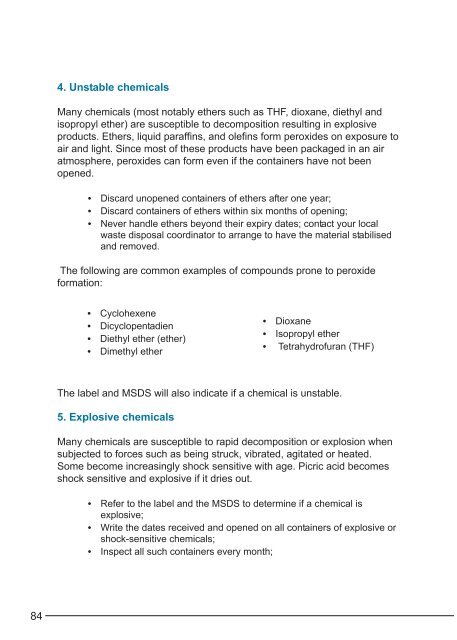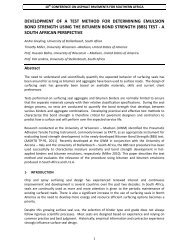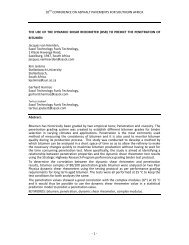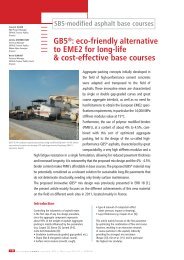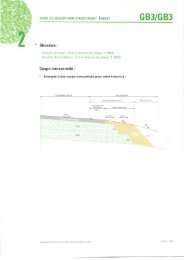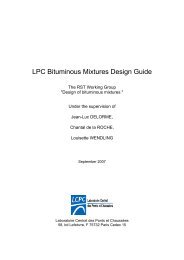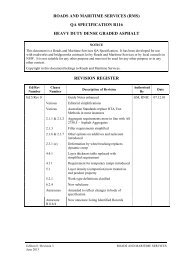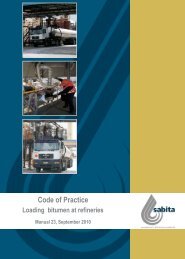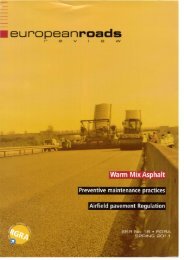Guide to the safe handling of solvents in a bituminous ... - Aapaq.org
Guide to the safe handling of solvents in a bituminous ... - Aapaq.org
Guide to the safe handling of solvents in a bituminous ... - Aapaq.org
- No tags were found...
Create successful ePaper yourself
Turn your PDF publications into a flip-book with our unique Google optimized e-Paper software.
4. Unstable chemicalsMany chemicals (most notably e<strong>the</strong>rs such as THF, dioxane, diethyl andisopropyl e<strong>the</strong>r) are susceptible <strong>to</strong> decomposition result<strong>in</strong>g <strong>in</strong> explosiveproducts. E<strong>the</strong>rs, liquid paraff<strong>in</strong>s, and olef<strong>in</strong>s form peroxides on exposure <strong>to</strong>air and light. S<strong>in</strong>ce most <strong>of</strong> <strong>the</strong>se products have been packaged <strong>in</strong> an airatmosphere, peroxides can form even if <strong>the</strong> conta<strong>in</strong>ers have not beenopened.• Discard unopened conta<strong>in</strong>ers <strong>of</strong> e<strong>the</strong>rs after one year;• Discard conta<strong>in</strong>ers <strong>of</strong> e<strong>the</strong>rs with<strong>in</strong> six months <strong>of</strong> open<strong>in</strong>g;• Never handle e<strong>the</strong>rs beyond <strong>the</strong>ir expiry dates; contact your localwaste disposal coord<strong>in</strong>a<strong>to</strong>r <strong>to</strong> arrange <strong>to</strong> have <strong>the</strong> material stabilisedand removed.The follow<strong>in</strong>g are common examples <strong>of</strong> compounds prone <strong>to</strong> peroxideformation:• Cyclohexene• Dicyclopentadien• Diethyl e<strong>the</strong>r (e<strong>the</strong>r)• Dimethyl e<strong>the</strong>r• Dioxane• Isopropyl e<strong>the</strong>r• Tetrahydr<strong>of</strong>uran (THF)The label and MSDS will also <strong>in</strong>dicate if a chemical is unstable.5. Explosive chemicalsMany chemicals are susceptible <strong>to</strong> rapid decomposition or explosion whensubjected <strong>to</strong> forces such as be<strong>in</strong>g struck, vibrated, agitated or heated.Some become <strong>in</strong>creas<strong>in</strong>gly shock sensitive with age. Picric acid becomesshock sensitive and explosive if it dries out.• Refer <strong>to</strong> <strong>the</strong> label and <strong>the</strong> MSDS <strong>to</strong> determ<strong>in</strong>e if a chemical isexplosive;• Write <strong>the</strong> dates received and opened on all conta<strong>in</strong>ers <strong>of</strong> explosive orshock-sensitive chemicals;• Inspect all such conta<strong>in</strong>ers every month;84


